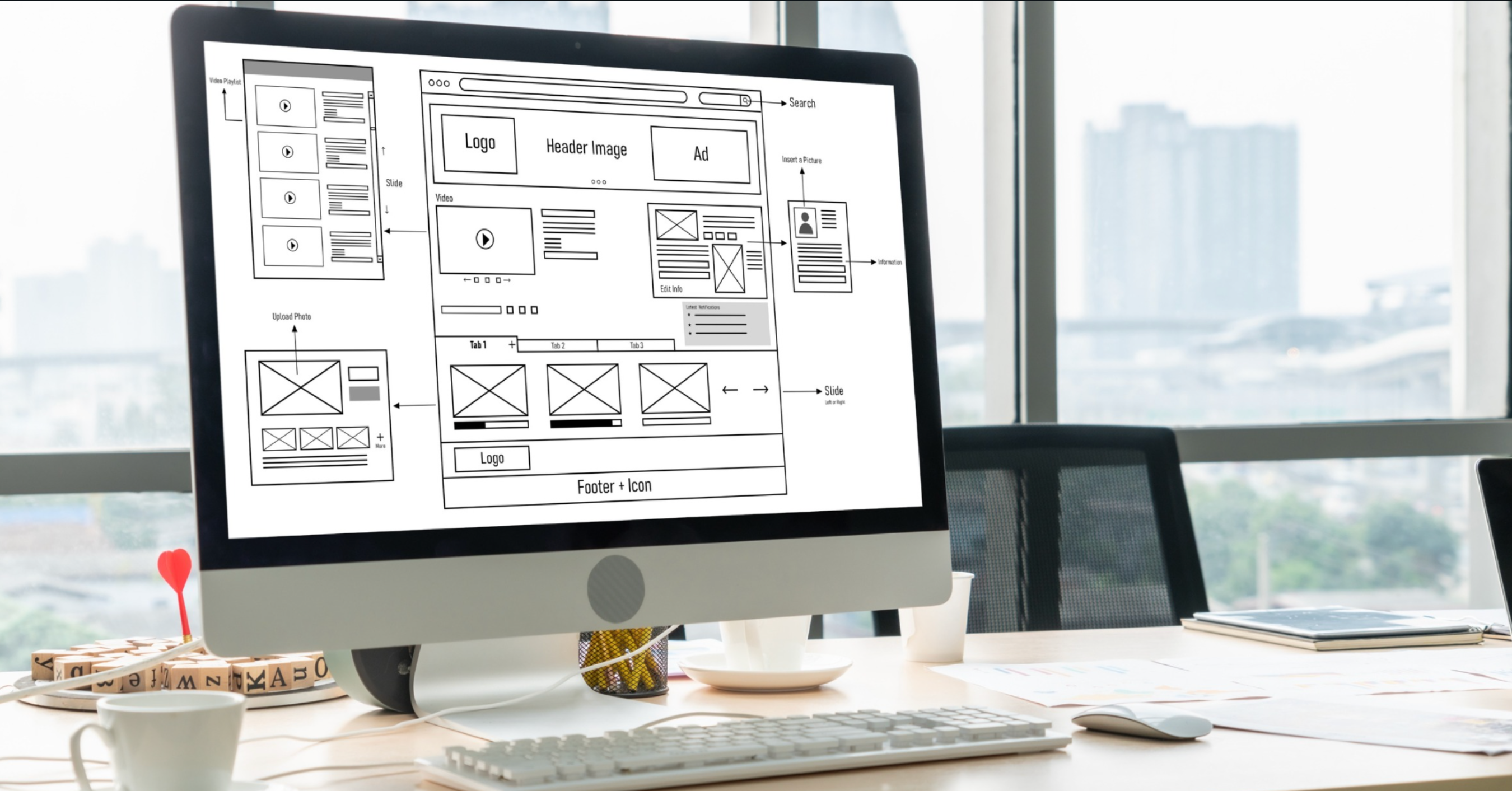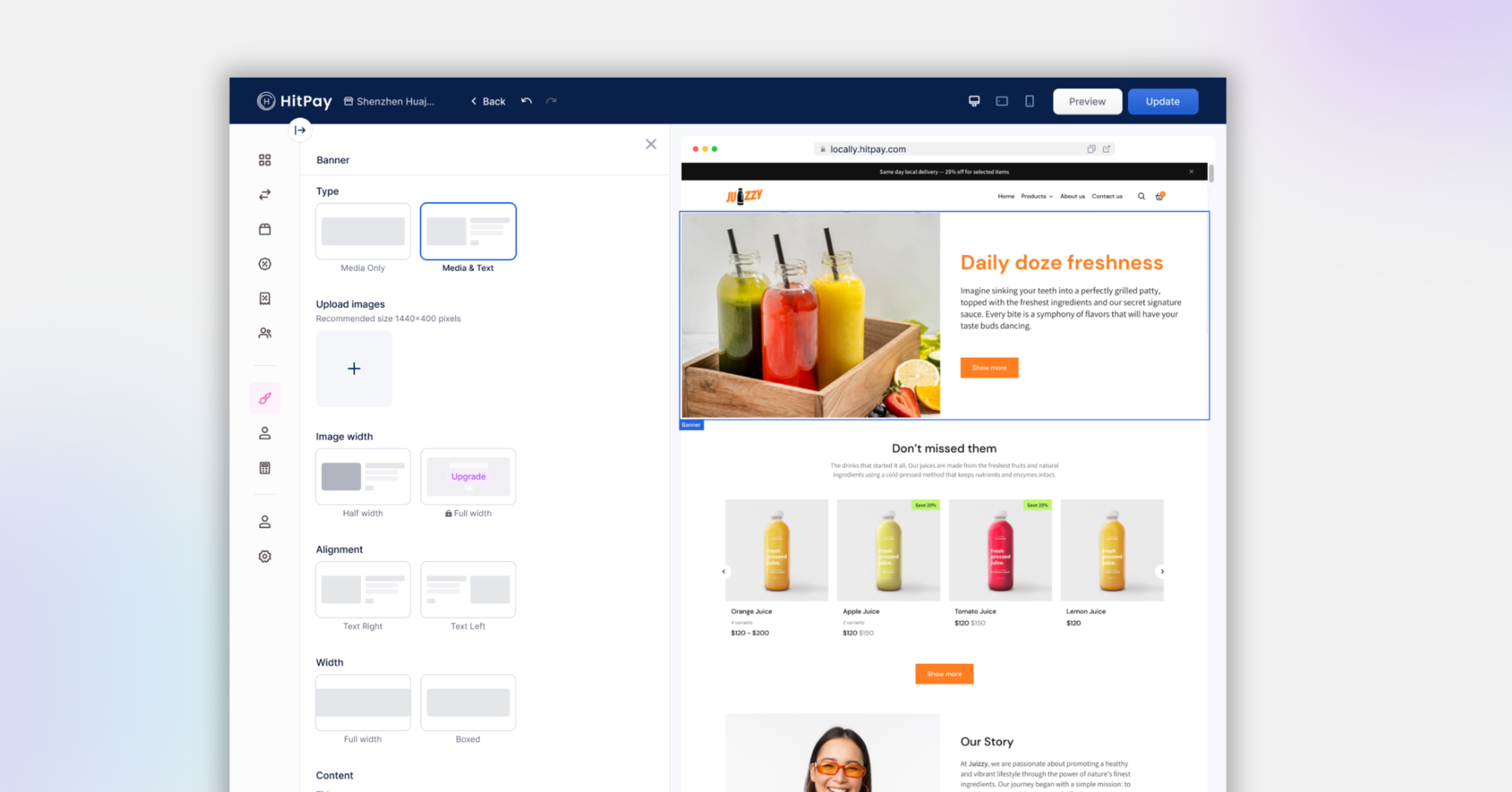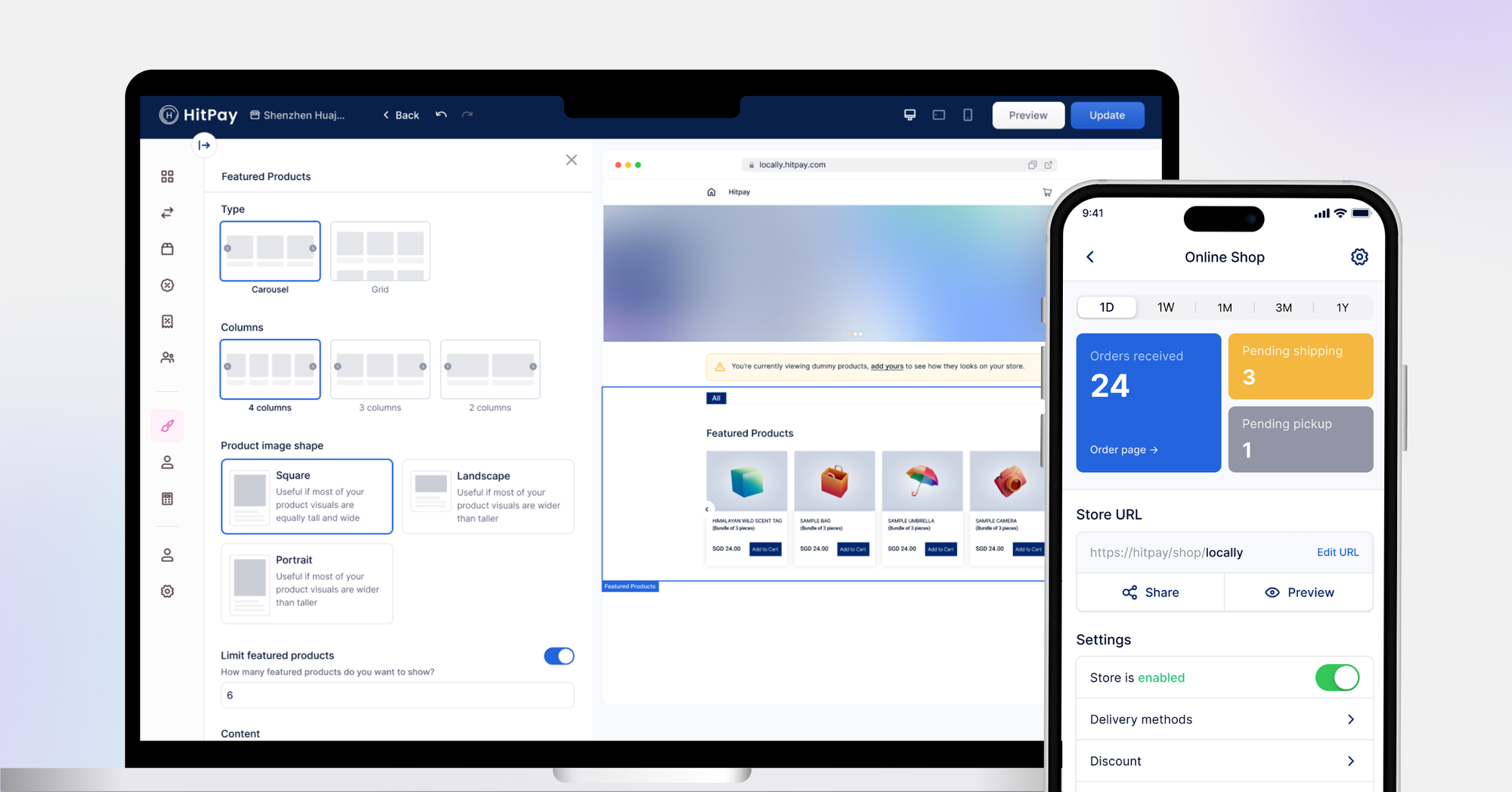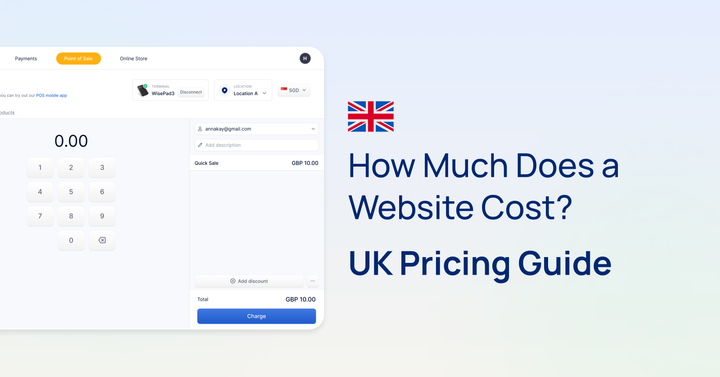What Makes a Good Website? Essential Web Design Tips
Learn essential web design tips to create a high-converting website. Discover key elements like clear messaging, user-friendly navigation, mobile optimization, and effective calls to action that attract visitors, boost engagement, and drive business growth.


A successful website is more than just a digital storefront – it’s a powerful tool that converts visitors into loyal customers. For small and medium-sized businesses (SMEs), building an effective website can be challenging, especially when juggling multiple tasks.
This guide dives into the essential components of a high-converting website and explains how using the right tools, like HitPay's integrated payment solutions, can simplify the process. Whether you’re looking to enhance your website's design, improve its functionality, or boost sales, this guide provides practical tips to help your business thrive online.
Key Takeaways
- Ensure easy navigation and a mobile-friendly design to enhance user engagement and accessibility.
- Use uniform colours, fonts, and logos throughout your site to build trust and recognition with visitors.
- Regularly update your site with engaging and relevant content to keep users informed and encourage return visits.
- Use direct and compelling CTAs to guide users toward desired actions, improving conversion rates.
What Makes a Good Website?

With an estimated 175 websites being created every minute (252,000 every day), it's more important than ever to ensure your website stands out and effectively engages visitors. A good website goes beyond just looking appealing; it must skilfully combine aesthetics with functionality to achieve its goals.
- User experience is at the heart of a successful site. Easy navigation helps visitors find what they need quickly, while a mobile-friendly design ensures the site works seamlessly on phones and tablets, which is essential in today's mobile-driven world.
- Adhering to accessibility standards ensures that all users, including those with disabilities, can easily interact with your content.
- Regularly updating your website with fresh, relevant content builds trust and credibility with your audience.
- Clear calls to action guide users toward taking meaningful steps, such as making a purchase or signing up for a newsletter.
Essential Design Features
A well-presented layout is key to grabbing user attention. It makes a strong first impression and keeps visitors interested. It takes just 0.05 seconds for users to form an opinion on a website, so it’s crucial to make a strong first impression with a visually appealing, well-organised design that immediately communicates your value and purpose.
Keeping your brand consistent builds trust with visitors. Using the same colours, fonts, and logo everywhere makes your brand clear. This helps users connect your brand with what you offer. Without brand consistency, your website may appear disjointed and unprofessional, causing potential customers to feel uncertain about your business.
Easy-to-use navigation is vital for keeping users engaged. It lets visitors find what they need quickly and encourages them to explore more. A well-organised site makes browsing smooth, which keeps users happy and coming back.
Aesthetically Pleasing Layout

An aesthetically pleasing layout captures attention and makes a strong first impression. The layout should balance white space, colours, and fonts to create a clean and organised look that communicates your brand's value and purpose immediately.
To create an aesthetically pleasing layout, consider:
- White space: Use it strategically to separate elements and prevent the page from looking cluttered.
- Colour schemes: Choose colours that align with your brand and are visually appealing.
- Typography: Use readable fonts and maintain consistency across headings, subheadings, and body text.
- Imagery: Incorporate high-quality images and visuals that complement your content and branding.
Consistent Branding
Consistent branding is essential for building trust and recognition among your visitors. Using the same colours, fonts, and logos across your website reinforces your brand identity and helps visitors connect your brand with your products or services.
Key elements of consistent branding include:
- Colour palette: Use a limited and consistent set of colours throughout your site.
- Typography: Maintain the same font style and size across all pages.
- Logo placement: Ensure your logo is consistently placed, usually in the top left corner.
- Voice and tone: Keep your messaging style uniform to reflect your brand personality.
Intuitive Navigation
Intuitive navigation is critical for enhancing the user experience and keeping visitors on your site. A well-organised menu structure allows users to find what they need quickly and encourages them to explore more of your site.
To achieve intuitive navigation, consider:
- Clear menu labels: Use descriptive terms for menu items.
- Logical content hierarchy: Organise pages in a way that makes sense to the user.
- Search functionality: Include a search bar for users to find specific content quickly.
- Minimise clicks: Aim for the “three-click rule” – users should find what they need in three clicks or less.
User Experience and Usability

User experience (UX) and usability are crucial components of a successful website. A website should be easy to use, accessible to everyone, and quick to load, ensuring a smooth and enjoyable experience for all visitors. These factors significantly affect how visitors perceive and interact with your site.
Mobile-Friendly Design
As of the first quarter of 2024, mobiles constituted around 77 percent of retail site traffic globally, meaning your website must work well on phones and tablets. A responsive design fits different screen sizes, making your site easier to use and improves the overall experience.
To ensure a mobile-friendly design:
- Responsive layout: Use flexible grids and layouts that adjust to any screen size.
- Optimised images: Compress images for faster loading without compromising quality.
- Touch-friendly elements: Ensure buttons and links are easy to tap on mobile devices.
- Readable text: Use legible fonts and sizes that do not require zooming.
Fast Loading Times
Fast loading times are vital for keeping visitors engaged with your site. Research shows that 53% of mobile users will abandon a site if it takes longer than three seconds to load. To ensure fast load times, optimise images, use efficient coding practices, leverage browser caching, and consider using a Content Delivery Network (CDN) to distribute your content more efficiently.
High-Quality Content
High-quality content is the backbone of a successful website. It should engage your audience, provide valuable information, and encourage visitors to take desired actions. This content should be regularly updated to stay relevant and reflect your brand's evolving story.
Engaging and Informative Text
Your website's text should be clear, concise, and compelling. It should address your audience's needs, pain points, and questions while highlighting the unique value of your offerings. Using active language, bullet points, and headings helps break up content into digestible chunks, making it easier for visitors to read and understand.
Key strategies for engaging content:
- Know your audience: Tailor your content to address the needs and interests of your target audience.
- Use storytelling: Create a narrative that connects emotionally with your audience.
- Be concise: Keep paragraphs short and to the point.
- Include keywords: Optimise content with relevant keywords for SEO.
Multimedia Integration (Images, Videos)
Integrating multimedia elements like images and videos can significantly enhance the appeal of your content. High-quality visuals help convey complex information more effectively, engage users, and make your website more memorable.
Best practices for multimedia use:
- Optimise file sizes: Compress images and videos to ensure fast loading times.
- Use captions and descriptions: Provide context and accessibility for multimedia content.
- Diversify content types: Use a mix of images, infographics, and videos to cater to different preferences.
- Embed videos carefully: Use video hosting platforms like YouTube or Vimeo to reduce server load.
Conversion Optimisation

Conversion optimization is the process of turning website visitors into customers or leads. This involves strategically designing elements that encourage visitors to take specific actions, such as signing up for a newsletter, filling out a form, or making a purchase.
Clear Calls to Action (CTAs)

Clear and compelling Calls to Action (CTAs) are essential for guiding visitors toward the next step in their journey. A CTA should be direct, action-oriented, and visible. Personalising CTAs based on user behaviour or demographics can increase their effectiveness by up to 42%.
Tips for effective CTAs:
- Use action words: Phrases like “Buy Now,” “Get Started,” or “Learn More.”
- Keep it simple: Limit the number of CTAs to avoid overwhelming users.
- Place strategically: Position CTAs in prominent places like above the fold or at the end of content.
- Test and optimise: A/B test different CTAs to find the most effective ones.
Effective Lead Generation Forms
Lead generation forms are crucial for capturing visitor information, such as email addresses, phone numbers, or other contact details. To maximise effectiveness, keep forms simple and only ask for essential information.
Strategies for lead forms:
- Use minimal fields: Ask for only the most critical information (e.g., name, email).
- Incorporate incentives: Offer something of value, like a free eBook or discount, in exchange for information.
- Design for mobile: Ensure forms are easy to complete on all devices.
- Include trust signals: Add badges or privacy assurances near the form.
Technical Excellence

Technical excellence ensures that your website performs well, is secure, and ranks highly on search engines. This includes SEO best practices, reliable hosting, and effective performance tracking.
SEO Best Practices
68% of all online experiences begin with a search engine and so Search Engine Optimization (SEO) is critical for improving your website’s visibility on search engines like Google.
This involves optimising elements such as meta tags, headers, URLs, and content with relevant keywords. Use structured data to help search engines understand your content better, and ensure your site is mobile-friendly and fast-loading.
To improve SEO:
- Use relevant keywords: Integrate keywords naturally into your content.
- Optimise meta tags: Write clear and concise meta titles and descriptions.
- Create high-quality backlinks: Encourage links from reputable sites to improve authority.
- Use structured data: Implement schema markup to help search engines understand your content.
Secure and Reliable Hosting
Choosing secure and reliable hosting is crucial for maintaining your website’s uptime and performance. A good hosting provider ensures fast loading times, robust security measures, and regular backups. Security certificates, like SSL, are essential for protecting user data and enhancing trust.
Tips for selecting the right hosting:
- Evaluate uptime guarantees: Choose a host with at least 99.9% uptime.
- Check for security features: Look for SSL, firewall, and DDoS protection.
- Assess scalability: Ensure the hosting plan can accommodate growth.
- Read reviews: Look for feedback from other users about performance and support.
When paired with a user-friendly website builder like HitPay you can create a professional-looking site that functions seamlessly. Visitors are more likely to trust and engage with websites that are secure, well-designed, and perform consistently.
Analytics and Performance Tracking
Using analytics tools like Google Analytics provides valuable insights into your website’s performance, user behaviour, and traffic sources. Regularly reviewing this data helps you identify areas for improvement, optimise content and design, and track the effectiveness of your marketing campaigns.
Key metrics to track:
- Bounce rate: Understand how many visitors leave after viewing one page.
- Conversion rate: Measure the percentage of visitors completing desired actions.
- Average session duration: See how long users stay on your site.
- Traffic sources: Identify which channels drive the most visitors.
Integrating Interactive Elements
Integrating interactive elements can make your website more engaging and encourage visitors to spend more time exploring your content. These elements can transform passive browsing into active participation, strengthening the connection with your audience.
Social Media Integration
Integrating social media profiles, such as Instagram, Facebook, and Twitter, can significantly expand your reach and engage a broader audience. Adding social media buttons on your website makes it easy for visitors to share your content, follow your brand, and stay updated on your latest news and promotions.
Adding social media links to your website is also crucial. Instagram boasts two billion monthly active users worldwide as of early 2024, so integrating your social media profiles, such as Instagram, can significantly expand your reach and engage a wider audience.
Benefits of social media integration:
- Increased traffic: Drive more visitors from social platforms to your site.
- Enhanced engagement: Encourage users to like, share, and comment on your content.
- Improved SEO: Social signals can indirectly boost your search engine rankings.
- Stronger brand presence: Keep your audience connected with your latest updates.
Interactive Tools and Features
Incorporating interactive tools, such as quizzes, calculators, and polls, can make your website more engaging and encourage visitors to spend more time on your site. These tools provide personalised experiences and valuable insights that foster a deeper connection with your brand.
Examples of interactive elements:
- Quizzes: Engage users with fun, informative quizzes that relate to your product or service.
- Calculators: Offer tools that help users calculate savings, ROI, or other personalised metrics.
- Polls and surveys: Collect feedback to understand user preferences and improve offerings.
- Chatbots: Provide instant customer support and guide users through your site.
Get Started With HitPay’s Secure Website Builder

A strong online presence is essential for any business, and a well-designed website is at the heart of it. By focusing on clear messaging, user-friendly navigation, consistent branding, effective calls to action, and data-driven improvements, you can create a website that not only attracts visitors but also turns them into loyal customers.
With the right tools and strategies, like a reliable website builder and secure hosting, your website can become a powerful asset that drives growth and success.
Try HitPay’s Online Website Builder for free today:
If you're a customer who has questions about paying with HitPay, feel free to contact us on our website.
Frequently Asked Questions about Website Builders
What are the essential elements that make a good website?
To make a good website, several essential elements should be incorporated. Firstly, a clear purpose, quality content and effective navigation is key. Additionally, responsive design ensures that the website is mobile-friendly and looks great on all devices. Optimising for SEO is essential to improve visibility on search engine result pages, helping to attract more potential customers.
How does web design impact user experience (UX)?
Web design significantly impacts user experience (UX) by influencing how users interact with your website. A well-designed site with a logical flow can enhance usability, making it easier for visitors to find what they need. This includes aspects such as page load time, which affects how quickly a web page appears.
What role does SEO play in creating a great website?
SEO is crucial in creating a great website as it helps improve visibility and ranking on search engine results. When a website is optimised for SEO, it increases the chances of appearing on the first page of search results, drawing more website visitors, optimising meta tags, and ensuring that the site is structured in a way that search engines can easily crawl.


